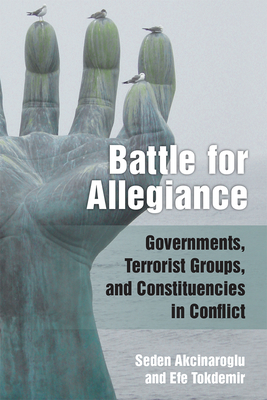
Akcinaroglu, Seden
product information
description
1Domestic terrorist groups, like all violent nonstate actors, compete with governments for their monopoly on violence and their legitimacy in representing the citizenry. Battle for Allegiance shows violence is neither the only nor the most effective way in which nonstate actors and governments work to achieve their goals. As much as nonviolent strategies are a rarely considered piece of the puzzle, the role of the audience is another crucial piece often downplayed in the literature. Many studies emphasize the interactions between the government and the terrorist group at the expense of the constituency, but the constituency is the common cluster for both actors to gain legitimacy and to demand its allegiance. In fact, the competition between the two actors goes far beyond who is superior in terms of military force and tactics. The hardest battles are fought over the allegiance of the citizens. Using a multimethod approach based on exclusive interviews and focus groups from Turkey and large N original data from around the world, Seden Akcinaroglu and Efe Tokdemir present the first systematic empirical analysis of the ways in which terrorist groups, the government, and the citizens relate to each other in a triadic web of action. They study the nonviolent actions of terrorist groups toward their constituencies, the nonviolent actions of governments toward terrorists, and the nonviolent actions of governments toward the terrorist group's constituencies. By investigating the causes, targets, and consequences of accommodative actions, this book sheds light on an important, but generally ignored, aspect of terrorism: interactive nonviolent strategies.
member goods
No member items were found under this heading.
Return Policy
All sales are final
Shipping
No special shipping considerations available.
Shipping fees determined at checkout.







